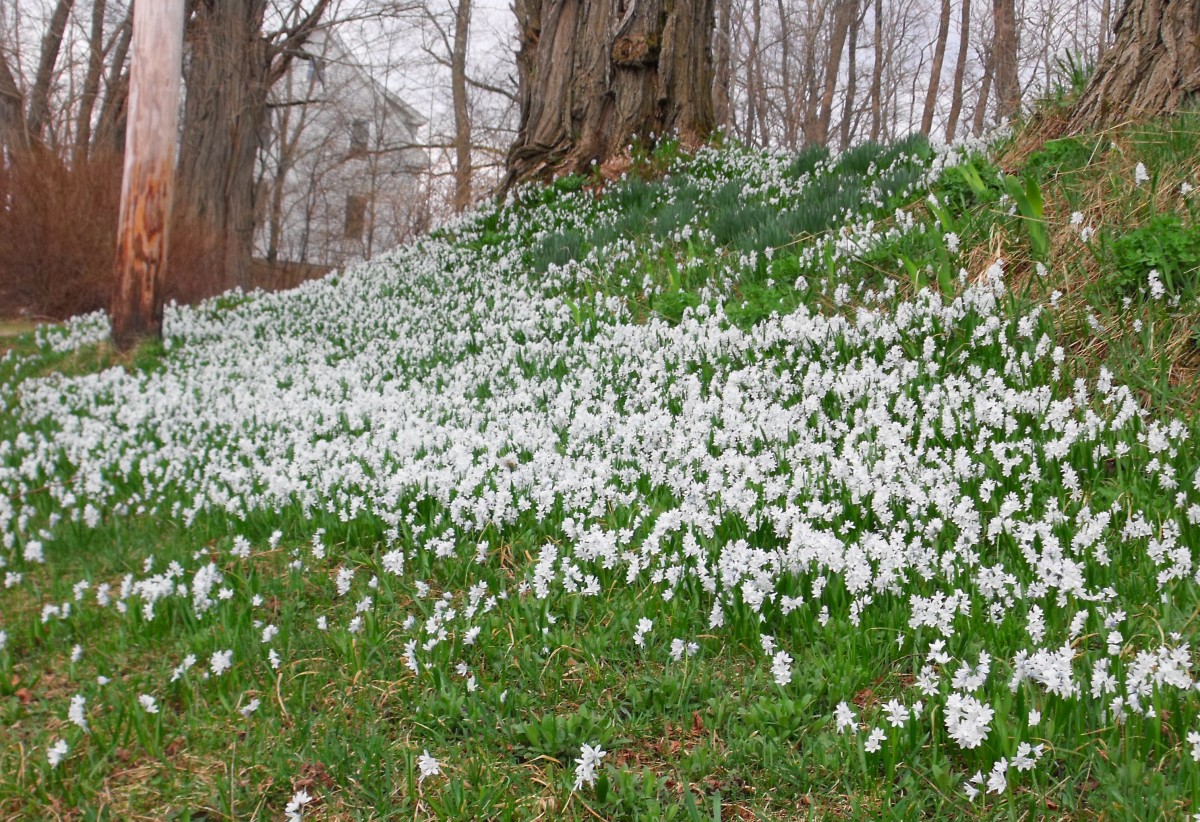Stinzenplanten
Naturalizing With Bulbs

Underplant your lawn with naturalizing flower bulbs for a delightful carpet of early spring blooms! Stinzenplanten, a Dutch tradition, works best in dappled spring light beneath deciduous trees or at the forest’s edge where the grass is sparse from summer shade. In Maine it’s not uncommon to see a stinzenplanten of Snow Crocus, Chionodoxa or Squill. After a long winter, coming upon swaths of wee blooms is utterly enchanting.
The best bulbs for stinzenplanten are those that naturalize and multiply by underground bulblets. Some varieties may also self-seed over time. Once your plants are established, you can divide and replant them to expand your area. Most types of bulbs recommended for stinzenplanten are small and can be planted about 3–4" apart. A long planting auger attached to a drill will save your back when planting lots of bulbs.
| Square footage of area to be planted | Number of bulbs needed with 3" spacing |
|---|---|
| 50 | 800 |
| 100 | 1600 |
| 200 | 3200 |
| 300 | 4800 |
Here are some recommended species commonly used in Stinze-style plantings
Very Early Spring:

Early Spring:
Mid to Late Spring

